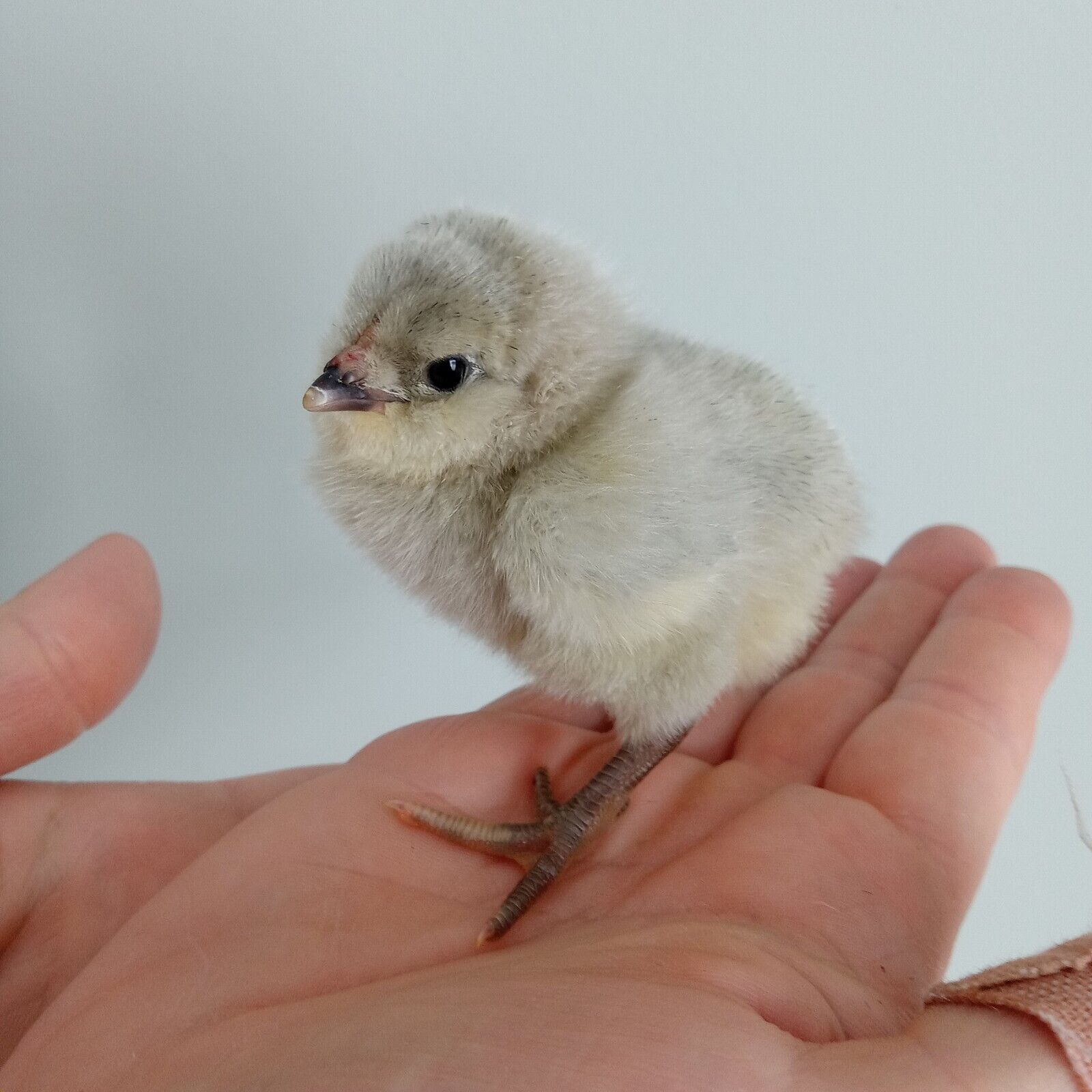Ever seen a chicken the color of a summer sky, but softer? That’s the Lavender Ameraucana, a true gem in the backyard chicken world. Beyond their striking appearance, these birds possess a unique charm. This comprehensive guide explores everything from their distinctive color genetics to practical care tips, offering a deep dive into the world of Lavender Ameraucanas.
Decoding the Lavender Ameraucana
Lavender Ameraucanas are genuinely unique chickens. This guide covers their care, unique coloration, and breeding traits.
Appearance and Offspring
Their beautiful lavender plumage is the first thing you’ll notice. It’s a delicate, greyish-purple, resembling a soft flower petal rather than a vibrant violet. Combined with fluffy muffs and a beard, they are truly one-of-a-kind. Remarkably, Lavender Ameraucanas “breed true,” consistently producing chicks with the same lavender coloring—a significant advantage for breeders.
The Allure of Blue Eggs
Lavender Ameraucanas are reliable layers of beautiful slate-blue eggs, adding a touch of wonder to any breakfast table. This characteristic elevates them beyond simply good layers to something truly special.
Temperament and Behavior
Known for their gentle and friendly personalities, Lavender Ameraucanas are docile birds, making them excellent additions to backyard flocks. They adapt well to free-ranging and coexist peacefully with other breeds. These inquisitive birds are also skilled foragers.
Simplifying Care
Caring for Lavender Ameraucanas is straightforward, mirroring the needs of other Ameraucana varieties. Provide a balanced diet, fresh water, a secure coop, and ample space, and they will thrive.
Breeding for Lavender
Breeding Lavender Ameraucanas is rewarding due to their true-breeding nature. Selecting breeding pairs based on plumage intensity and consistent laying is crucial. The incubation and chick-rearing process is similar to other chickens, but the arrival of fluffy lavender chicks is uniquely exciting.
Ameraucana vs. Araucana
Lavender Ameraucanas are a specific Ameraucana type developed in the United States, distinct from Chilean Araucanas, despite shared ancestry. They have distinct appearances and temperaments.
Comparing Blue-Egg Layers
Several breeds lay blue eggs, but Lavender Ameraucanas stand out due to their consistent production of lavender offspring—a key advantage for those passionate about this color.
Meeting Show Standards
Showing Lavender Ameraucanas requires understanding breed standards, such as plumage uniformity and comb type, detailed in the American Poultry Association’s Standard of Perfection.
Unraveling the Rarity
The rarity of Lavender Ameraucanas is debatable, likely dependent on location and breeder networks. Further investigation could clarify this intriguing aspect. Are you curious about how many mg is 40 units of semaglutide?
Lavender Ameraucana Eggs: Decoding the Hue
Lavender Ameraucanas lay a distinctive lavender or grayish-blue egg, a subtle variation from the typical Ameraucana light blue. This soft hue is a key attraction, setting them apart. A healthy hen lays approximately 200-250 of these pastel-colored eggs annually, with peak production in the first few years. This decreases as the hen ages, a common characteristic in chickens. It usually takes about 6-7 months before they start laying. Some might start earlier or later, depending on factors like day length and nutrition. Ongoing research might further clarify factors influencing egg production.
The “self-blue” lavender plumage, slate-colored legs and feet, and yellow or horn-colored beaks add to their charm. While most lay the characteristic lavender hue, variations occur. Some eggs have a bluish tint, while others lean toward gray. There’s even debate about whether diet influences the shade, though research is ongoing.
These unique eggs add flair to meals and are popular for photography and creative culinary projects. Some believe the pastel color has a calming effect, making breakfast a more serene experience.
| Characteristic | Description |
|---|---|
| Egg Color | Lavender, sometimes grayish-blue |
| Annual Egg Production | Approximately 200-250 eggs |
| Maturity | Begins laying around 6-7 months of age |
| Plumage Color | Uniform lavender (“self-blue”) |
| Leg/Feet Color | Slate |
| Beak Color | Yellow or horn |
This table summarizes key features, providing a quick reference. While these are general guidelines, individual birds can vary.
Are Lavender Ameraucanas Rare?
The rarity of Lavender Ameraucanas is a complex question. One factor contributing to their perceived rarity is that the lavender color isn’t officially recognized by the Ameraucana breed standard. Breeders focusing on show birds often stick to standard colors, making lavender less common.
Confusion with readily available Easter Eggers, which can also have lavender feathers, further complicates the matter. However, Lavender Ameraucanas breed true, meaning their offspring will also be lavender. This predictability suggests increasing their population isn’t impossible; it requires dedicated breeders.
Limited availability, combined with increasing demand, creates a kind of artificial rarity. This makes them seem rarer, even if their numbers aren’t critically low. Regardless of their official rarity status, their unique beauty makes them highly desirable. Combat the dampness and discover the most effective methods to dehumidify a garage.
Ameraucana Chickens: Weighing the Drawbacks
Ameraucanas, prized for their blue eggs, have their quirks. Before welcoming them, understand the potential downsides.
Egg-Laying Realities
While their blue eggs are beautiful, Ameraucanas aren’t top-tier egg producers. Laying 3-4 eggs per week, they fall short of production breeds like Rhode Island Reds. If quantity is your priority, consider other options.
Temperament: Free Spirits
Ameraucanas are energetic and active, sometimes flighty, making them more prone to escaping than other breeds. Temperament varies between strains, so research and choose accordingly.
Health Considerations
Ameraucanas are generally hardy but can be susceptible to diseases like other chickens. Regular vet checkups, a balanced diet, a clean coop, and attentive observation are crucial.
Ameraucana vs. Easter Egger
Finding true Ameraucanas can be challenging due to confusion with Araucanas and Easter Eggers. Look for the pea comb, muffs, and beard—hallmarks of a true Ameraucana. Source from reputable breeders specializing in Ameraucanas.
Cost Considerations
Ameraucanas are generally more expensive than common breeds, reflecting their relative scarcity and demand. Factor this into your budget.
Making an Informed Decision
Ameraucanas have their drawbacks: lower egg production, a flighty nature, potential health predispositions, difficulty finding purebreds, and higher cost. However, their unique charm, including striking blue eggs and lively personalities, makes them a captivating addition for many. Carefully weigh the pros and cons, do your research, and decide if Ameraucanas are right for you.
- Explore White and Sea: A Comprehensive Overview - March 15, 2025
- Red Glass History: 4000 Years of Allure - March 15, 2025
- Find the Perfect Character’s Name: A Writer’s Guide - March 14, 2025

















1 thought on “Lavender Ameraucanas: A Complete Guide to Their Care, Color, and True-Breeding Traits”
Comments are closed.